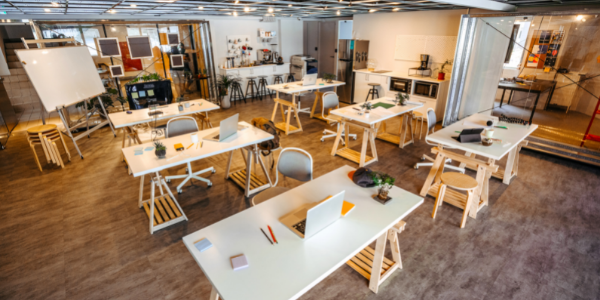Co-working has been a recent, but exponentially growing force in the office space market. So, what exactly is a co-working space? It is essentially a shared workplace, whereby people belonging to different companies and professions occupy the same office. Co-working spaces tend to have specialized interior designs and environments, in the bid to facilitate a certain type of work culture that is different from traditional office spaces.
The rapid growth of co-working spaces has warranted cries about there being a co-working “bubble”, and warnings that co-working may very well just be a fad of the present. But before we get into that, let us look at exactly why co-working is so popular with the workforce of today:

Flexibility
A big draw for self-employed workers and entrepreneurs is the time flexibility offered by co-working spaces. There is generally no fixed time that workers have to be at the office, and they are free to come and go whenever they want. There are even co-working spaces that are open 24 hours, so night owls rejoice!
Additionally, co-working spaces have flexible layouts, in the sense that there are both collaborative and private spaces. Want to have some discussion, or feed off the work vibe of other workers? Head to a shared desk. Want to have some quiet time to concentrate on some work? Pick a cubicle or designated quiet area. Want to do some networking? Head to the café, where there is bound to be other workers having a coffee break. Our needs are complex, and co-working spaces are flexible enough to meet these needs, compared to traditional office spaces.
While co-working spaces offer greater flexibility, it also provides the self-employed some structure in their work-life. An alternative for the self-employed is to work at home; but the home is fraught with many perils (“this is the last episode of *All of us are dead* I’m going to watch, I swear”). Going to a co-working space provides a routine for the self-employed and serves as a self-check. Nobody gets away with watching k-drama at the office without getting seriously judged, so it helps keep the self-employed on task and focused. This is especially important for them, since their income is directly tied to their daily productivity, more so than salaried workers.

Cost efficient
For startups and budding entrepreneurs, cost is a significant obstacle to be managed and overcome. As such, co-working spaces are attractive to them, because these spaces can lead to cost-savings and convenience. Firstly, co-working spaces are fully fitted out, with all the requisite facilities. This is convenient for startups, who may have to fork out a hefty sum for their office fit-out if they were to rent their own office space. These startups can focus on their business instead of having to worry about their office space.
Secondly, and perhaps more significantly, co-working spaces are not leased out long-term, unlike traditional office spaces. Most co-working spaces operate on a membership basis, whereby you sign up to become a member at a co-working space and pay the membership fee per month. This pay-per-use scheme offers a lot more financial flexibility compared to a long-term lease. Startups are able to downsize or upsize depending on their space needs.
Community and collaboration
Perhaps the biggest draw of co-working spaces would be that it is excellent for collaboration and the sharing of ideas. This does not only benefit startups; MNCs are drawn to co-working spaces for this very reason, and various MNCs have located some of their departments (most commonly their IT or marketing departments) in co-working spaces. MNCs do this because they want their workers to have some collaboration with startups, whereby both parties can bounce ideas off each other. This is extremely beneficial for startups also, because they get an opportunity to rub shoulders with big-name MNCs.
The collaborative spirit then forms the bedrock of a co-working community. The community is the most important aspect of a co-working space, and most co-working operators go to great lengths to cultivate a vibrant and robust community in the office. This community is what sets it apart from traditional offices and is also a differentiating factor from rival co-working spaces.
A good work culture is one of the top things that employees will seek and having a unique and cohesive community will ensure that workers have a reason to keep coming to office. Job satisfaction will likely improve, leading to more motivated workers. It is thus not surprising that the Harvard Business Review found that workers thrive in co-working spaces, more so than workers who go to traditional offices.

Is co-working here to stay?
There are some who believe that co-working is just a fad and will eventually fall out of favour. That may be so, but it is unlikely, seeing as how the work preferences and dynamics of the millennial generation differ from the preceding generation. Co-working spaces have flourished because there is substantial demand from a workforce that is increasingly becoming more independent, mobile and entrepreneurial. Instead of waning, demand for co-working spaces will probably increase as more and more young adults enter the workforce.
Having said that, it is equally unlikely that co-working spaces will replace traditional office spaces. I believe traditional office spaces will eventually evolve to emulate co-working spaces, but traditional offices are still needed because certain work cannot be done in co-working spaces. Co-working environments are not suitable for sensitive and confidential work that require complete discretion and privacy.
The co-working trend represents a fundamental shift in working attitudes and workplace culture. Even if all the co-working spaces were to vanish one day, the values of co-working will not, and will eventually become the new standard for the working world.
Want to find the best mortgage rate in town? Check out our free comparison service to learn more!
Read more of our posts below!

